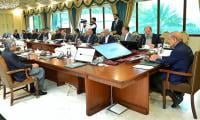When taken in concert with other factors, there has been interesting development with India holding fresh discussions with the US on two pacts, the Communications Compatibility and Security Arrangement (COMCASA) and the Basic Exchange and Cooperation Agreement for Geo-Spatial Cooperation (BECA). The pacts put on the table by the US some 15 years ago were rejected by successive Indian governments, which thought that the use of American C4ISR systems could compromise India’s tactical operational security, enabling the US to keep track of Indian warships and aircraft.
Earlier, in 2016, India had inked the bilateral military logistics pact Logistics Exchange Memorandum of Agreement (LEMOA) with the US. According to weapon-hungry Indian armed forces, the pacts will allow India more access to cutting-edge military technologies and platforms with encrypted and secure communications like armed drones (UAVs) including MQ-9 Reaper or Predator-B drones.
So far, New Delhi has bought military hardware and software worth $15 billion from the US since 2007 including C-130J Super Hercules, C-17 Globemaster-III and P-8I Poseidon aircraft. India is also holding talks with the US to purchase 22 unarmed Sea Guardians Plus, which are high-altitude, long-endurance drones capable of flying non-stop for over 27 hours for intelligence, surveillance and reconnaissance missions, at an estimated cost of $2 billion.
At the same time, the Stockholm International Peace Research Institute (SIPRI) said in a report released recently that India is one of the world's five biggest military spenders with New Delhi's defence spending rising by 5.5 percent to $63.9 billion in 2017, which had now passed France.
According to SIPRI, the worldwide military spending rose marginally last year to $1.73 trillion, or roughly 2.2 percent of global gross domestic product. The list of the world's biggest military spenders has remained consistent in recent years, dominated by the US and China, which spent $610 billion and $228 billion respectively
According to SIPRI’s data, India was the largest importer of major arms in the past five years, single-handedly buying 12 per cent of the global total. “India’s arms import has increased 24 per cent in the past five years compared with previous five years. American manufactures are the major beneficiaries of this increased arms import. In the past five years, India’s arms imports from the US has increased more than five times.”
But Indian generals are still worried because more spending does not mean state-of-the-art weapons. It has been revealed by Laxman Kumar Behera, a research fellow with New Delhi's Institute for Defence Studies and Analyses, the rise in defence spending mostly goes toward salaries and pensions for roughly 1.4 million serving personnel and more than two million veterans. He says because so much money is consumed by manpower costs, there isn't enough left over to buy equipment.
To get a better sense of the measure, Indian Vice-Chief of Army Staff Lt Gen Sarath Chand told parliamentarians recently that the current defence budget barely accounts for inflation and tax payments. “Only 14 percent goes toward military modernization compared to 63 percent for salaries,” Chand said.
Nevertheless, the Indian media has admitted that while India’s arms import has increased substantially, the arms imports of Pakistan, with whom India has fought most of its wars since independence, has decreased by 36 per cent. In fact, according to SIPRI, Pakistan does not even come in the list of top 15 military spenders in 2017.
SIPRI adds: “India was the world’s largest importer of major arms in 2013–17 and accounted for 12 per cent of the global total. Its imports increased by 24 per cent between 2008–12 and 2013–17. Russia accounted for 62 per cent of India’s arms imports in 2013–17. However, arms imports from the USA rose by 557 per cent between 2008–12 and 2013–17, making it India’s second largest arms supplier. Despite its continuing tensions with India and ongoing internal conflicts, Pakistan’s arms imports decreased by 36 per cent between 2008–12 and 2013–17. Pakistan accounted for 2.8 per cent of global arms imports in 2013–17. Its arms imports from the USA dropped by 76 per cent in 2013–17 compared with 2008–12.”
A representational image of an immigrant holding a Canadian flag. — X/@CitImmCanada/FileIslamabad: A delegation of...
A photograph of students appearing for an exam. — AFP/FileRawalpindi:The first annual intermediate examination for...
This image shows the logo of the Ministry of Human Rights. — APP/FileIslamabad: Ministry of Human Right’s Helpline...
Deputy Commissioner Islamabad, Irfan Memon can be seen in this image. — Facebook/Office of the Deputy Commissioner,...
This representational image shows a little plant. — Unsplash/FileRawalpindi: Director General , Parks and...
Students in a school in Islamabad can be seen attending a class on October 12, 2023. — Facebook/Federal Directorate...







